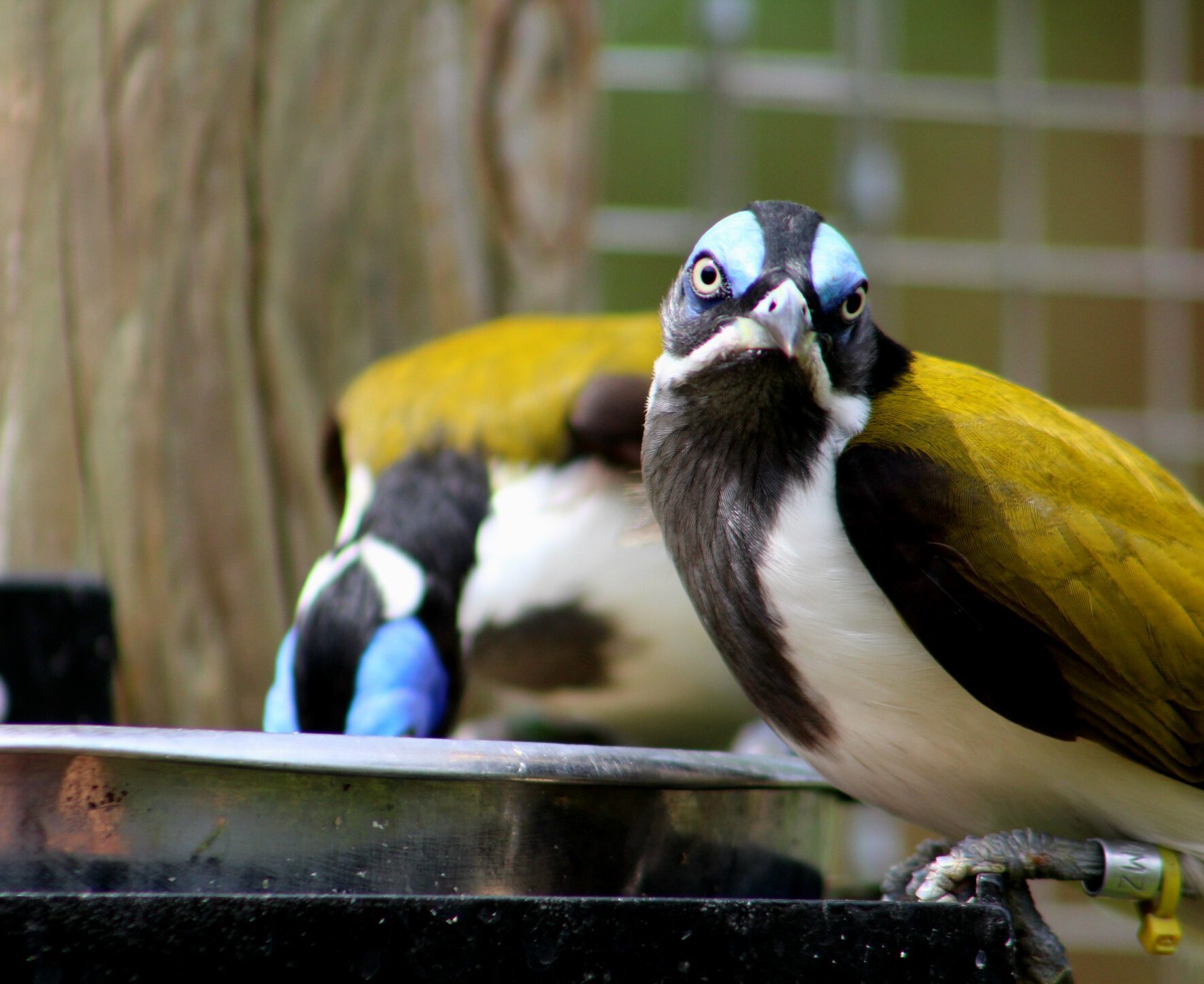Blue-faced honeyeaters use abandoned nests from other birds as the foundations for their own. Honeyeaters can build their own round nests of bark and grass, but they prefer to renovate old nests.
I LIVE IN AUSTRALIA
The blue-faced honeyeater is native to northern and eastern Australia. They prefer tropical and subtropical areas with open forests close to water, such as mangroves and coastal forests.
I AM AN INSECTIVORE
The blue-face honeyeater’s diet consists mostly of insects and other invertebrates, but they will also consume fruit and nectar.
BLUE-FACED HONEYEATERS ARE SOCIAL
The blue-faced honeyeater is a very social bird and will often live in small clans of 4 to 10 individuals.

